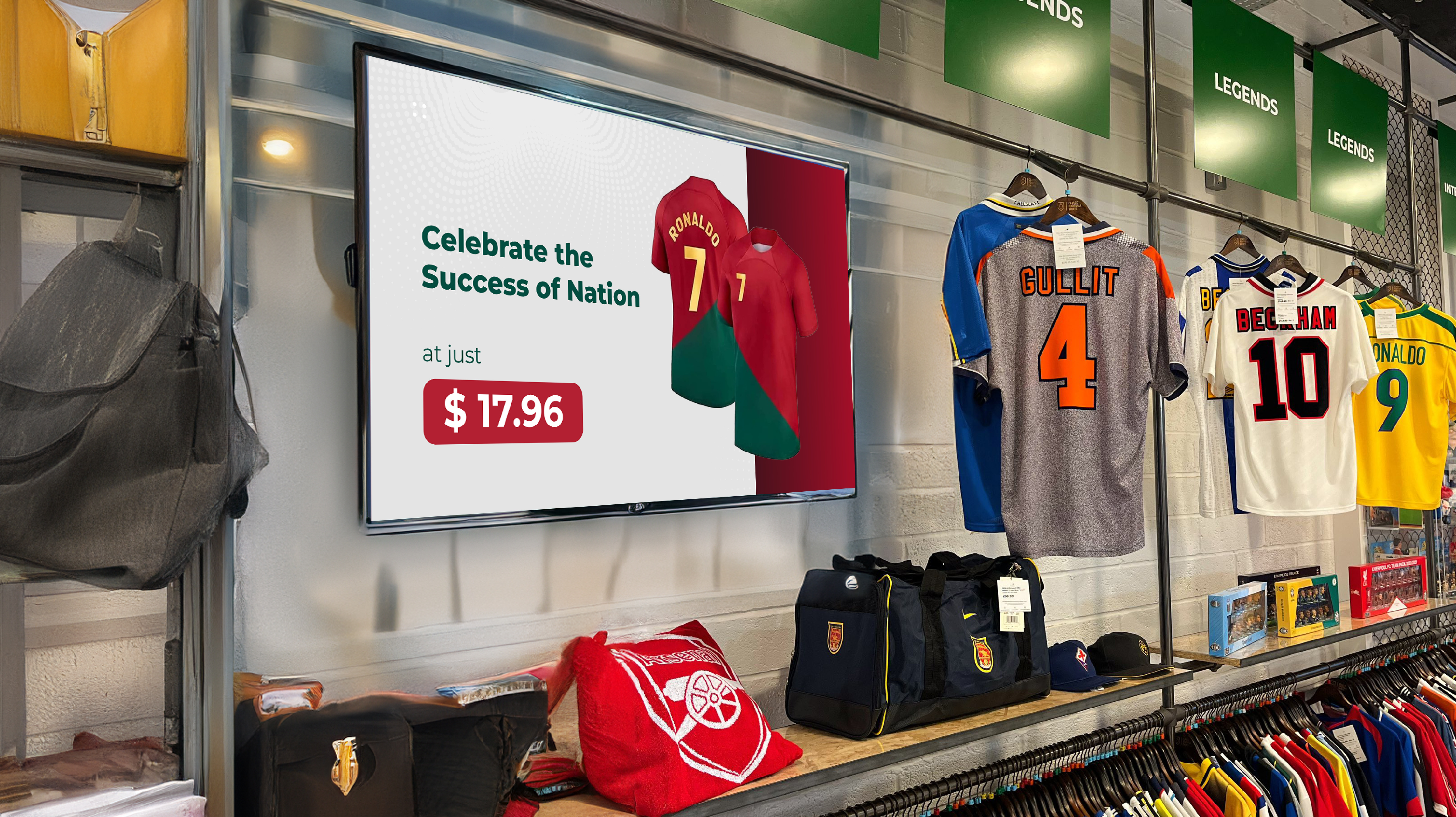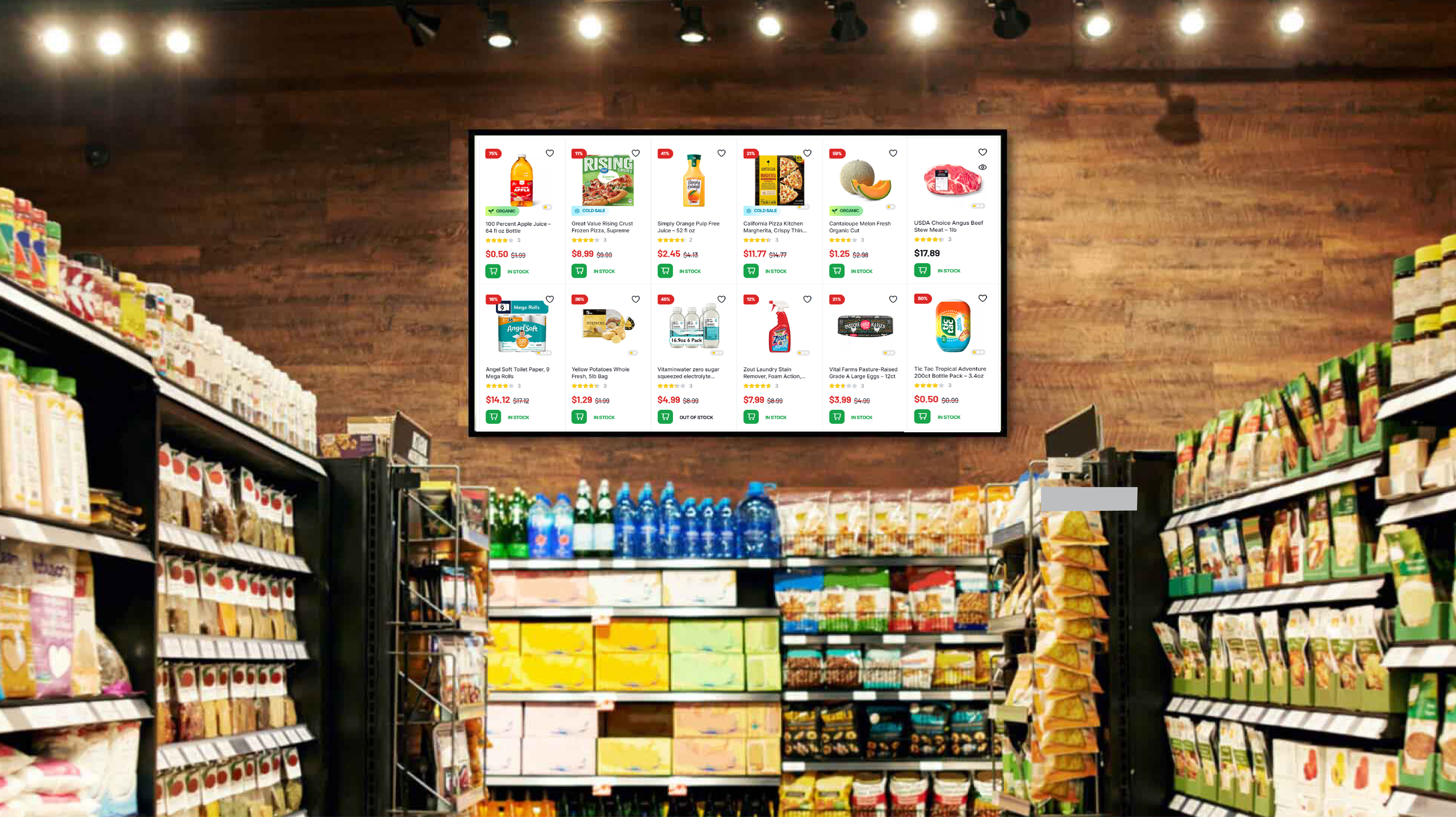Did you know that 86% of shoppers are willing to pay more for a better customer experience?
That's right - customers pay more when you make them go “wow” with your services.
One way to achieve this is by using retail digital signage for dynamic pricing strategies.
Imagine captivating your customers with real-time price adjustments based on market trends, competitor actions, and even the weather. This powerful combination not only optimizes pricing but also enhances the overall shopping experience for consumers.
Digital pricing displays showcase these dynamic prices, fostering transparency and informing customers about fluctuating costs. This blog delves into why you should use digital signage for retail.
Let’s start with this now!
Understanding Dynamic Pricing Strategies
The big question is — why use dynamic pricing tools in the first place? For retailers, these pricing tools help adjust pricing updates dynamically unlike static price tags. This not only allows you to adjust prices based on demand, and competition but also helps in retail pricing optimization.
For instance, during peak shopping hours, a sporting goods store could use digital signage pricing models to increase prices on jerseys of the winning team, optimizing revenue. To remain competitive, retailers may use digital pricing displays to match competitor prices, as seen with grocery stores adjusting prices to align with nearby flyers.
Alternatively, retailers can use retail digital signage to manage inventory by showcasing flash sales on popular items, encouraging more sales with temporary discounts. Additionally, grocery stores often reduce prices on prepared meals nearing expiration, a strategy facilitated by digital price tags that communicate time-sensitive deals, reducing food waste.

Benefits of Digital Signage for Dynamic Pricing
Implementing digital signage pricing models unlocks a treasure trove of benefits for retailers. Here are some key advantages:
-
Increases Flexibility:
Retailers can adapt pricing strategies quickly based on real-time data, ensuring they remain competitive and aligned with market trends. Imagine a clothing store dynamically adjusting prices on seasonal items based on weather fluctuations. A sudden heat wave might prompt them to lower prices on swimwear to capitalize on increased demand.
-
Enhances Customer Engagement:
Eye-catching digital displays capture customer attention and provide clear information about dynamic pricing. Interactive features can further engage customers and personalize the shopping experience. For example, a bakery could use digital signage to display not only the price of each pastry but also highlight ingredients and nutritional information, allowing customers to make informed purchasing decisions.
-
Improves Profit Margins:
Dynamic pricing allows retailers to maximize profits by optimizing pricing models. Prices can be adjusted to meet demand and market fluctuations, leading to increased sales volume and healthy profit margins. Consider a furniture store that uses digital signage to advertise bundled deals on couches and coffee tables. This dynamic pricing strategy could encourage customers to purchase both items, boosting overall sales and profit margins.
-
Reduces Price Disagreements:
Digital signage eliminates confusion and potential disputes by displaying clear and up-to-date prices. Imagine a pharmacy using digital signage to showcase price adjustments on over-the-counter medications based on daily sales figures. This transparency helps to build trust with customers and eliminates confusion at checkout.

Best Practices for Dynamic Pricing Strategies
Implementing dynamic pricing strategies through retail digital signage can significantly enhance customer engagement and operational efficiency. Retailers can optimize their pricing models to adapt quickly to market trends and customer behaviors.
- Seamless Integration: Effective integration of digital signage with POS systems facilitates real-time updates and supports dynamic pricing technology. This integration ensures accurate pricing adjustments based on retail pricing trends and optimization strategies, enhancing operational agility and customer satisfaction with digital price tags.
- Clear Communication: Transparently communicate dynamic pricing strategies using digital signage, emphasizing benefits like competitive pricing and improved product availability. Clearly display retail pricing factors, such as time-sensitive promotions or seasonal adjustments, to build trust and understanding among customers through digital signage pricing models.
- Visually Appealing Displays: Dynamic displays use multimedia like videos, graphics, and GIFs to share relevant information. Since humans on average are visual creatures, these engaging visuals capture more customer attention, leading to enhanced readability, higher foot traffic, and improved brand identity.
- Targeted Content: Digital signage lets you personalize your pricing displays for specific customer segments or product categories. Use customer data to customize pricing messages and show promotions through digital price tags. This targeted approach boosts customer engagement and loyalty, optimizing retail pricing with digital signage.
Looking Ahead
Retail digital signage is a game-changer in the world of retail. Its ability to engage customers, provide dynamic content flexibility, and contribute to brand building and differentiation makes it an indispensable tool for retailers looking to thrive in a competitive market.
As technology continues to evolve, the potential for retail digital signage is only expected to grow. With the growing adoption of innovative technology like artificial intelligence (AI) and machine learning (ML), we can only imagine the results of integrating these tools with digital signage to transform the retail landscape.
If you’re on the lookout for a digital signage partner, L Squared’s got you! and Leverage our digital signage solutions to explore the possibilities of dynamic pricing. The future of retail is dynamic, and those who embrace change will be the ones who thrive.




